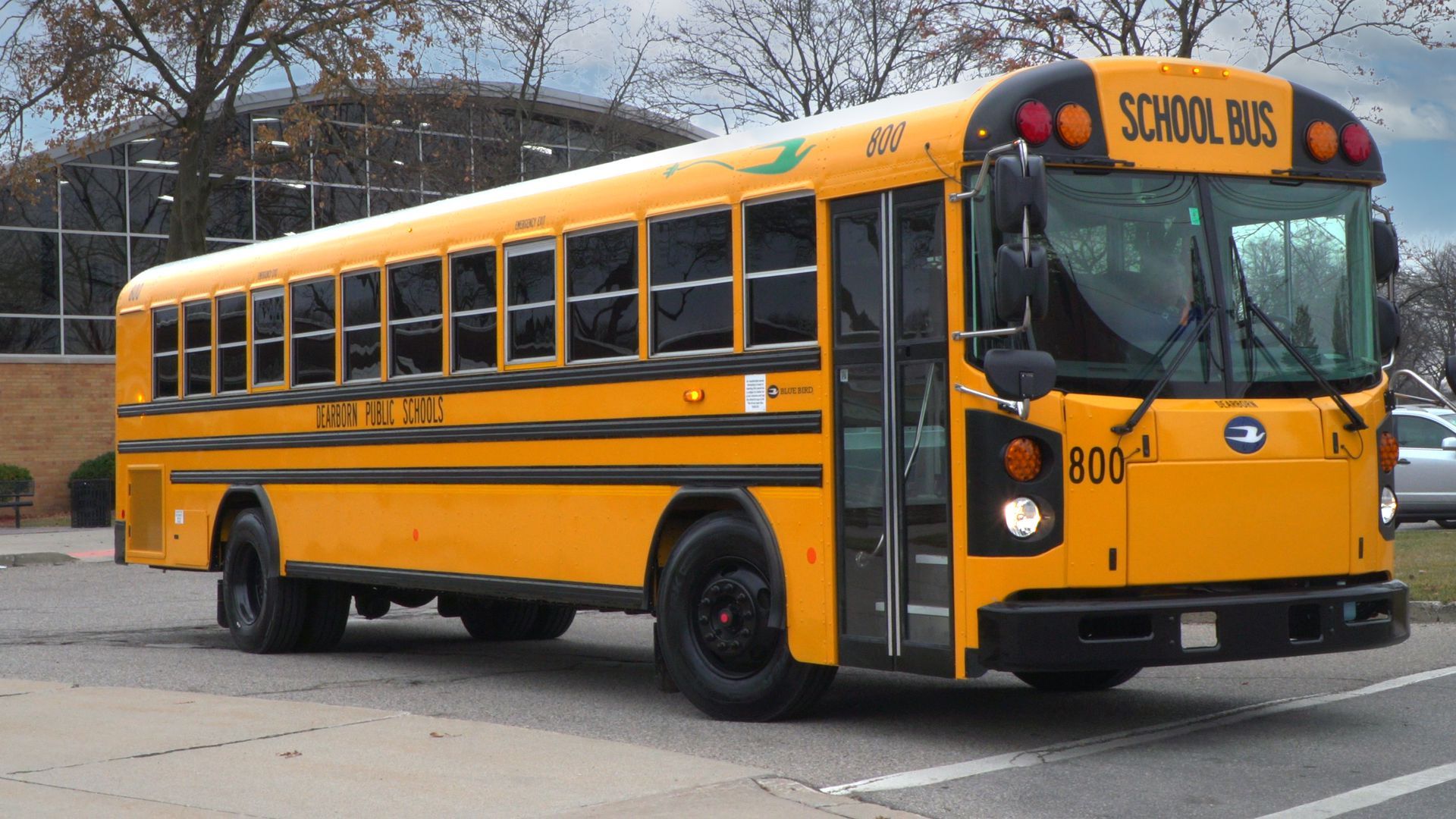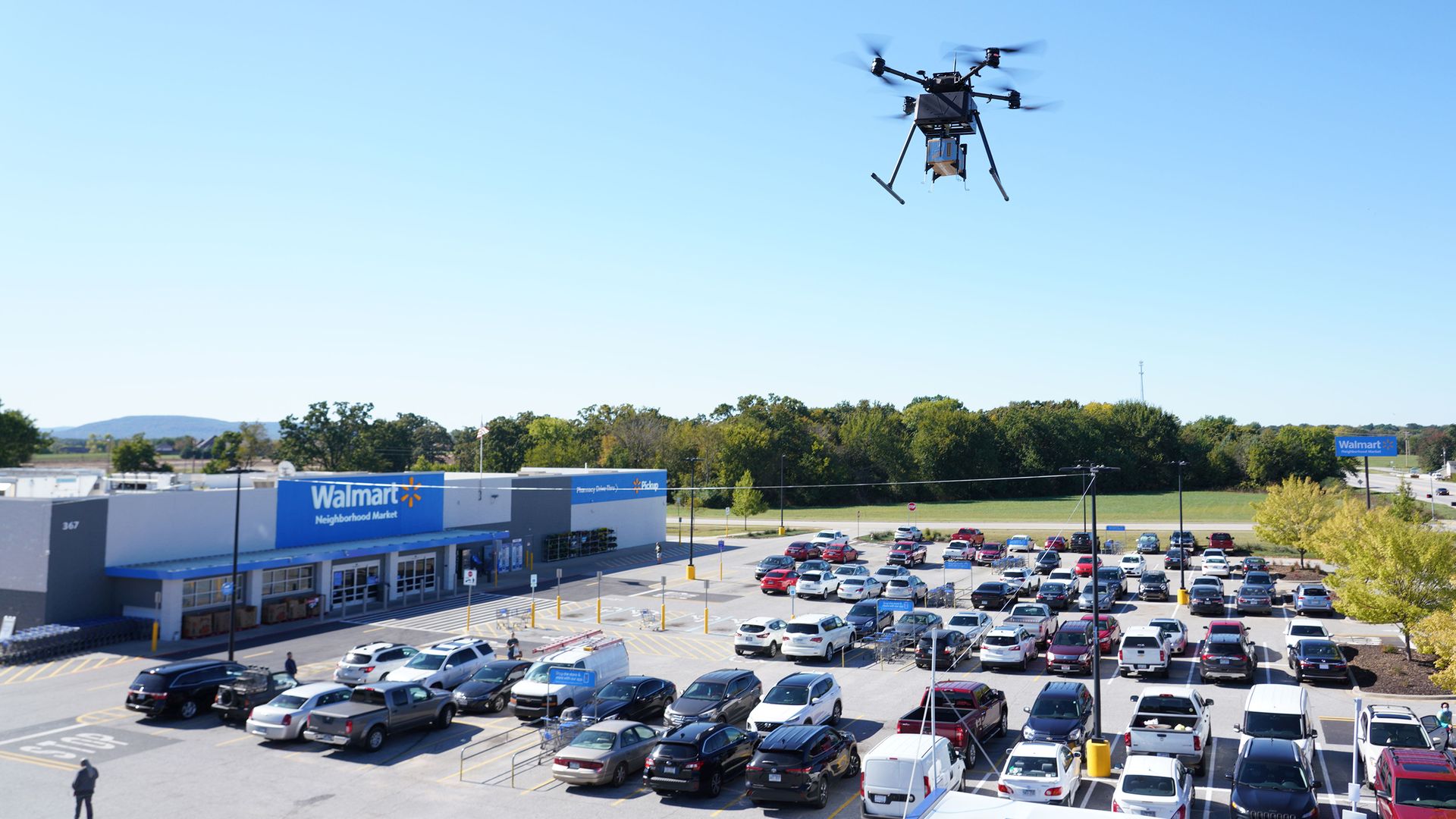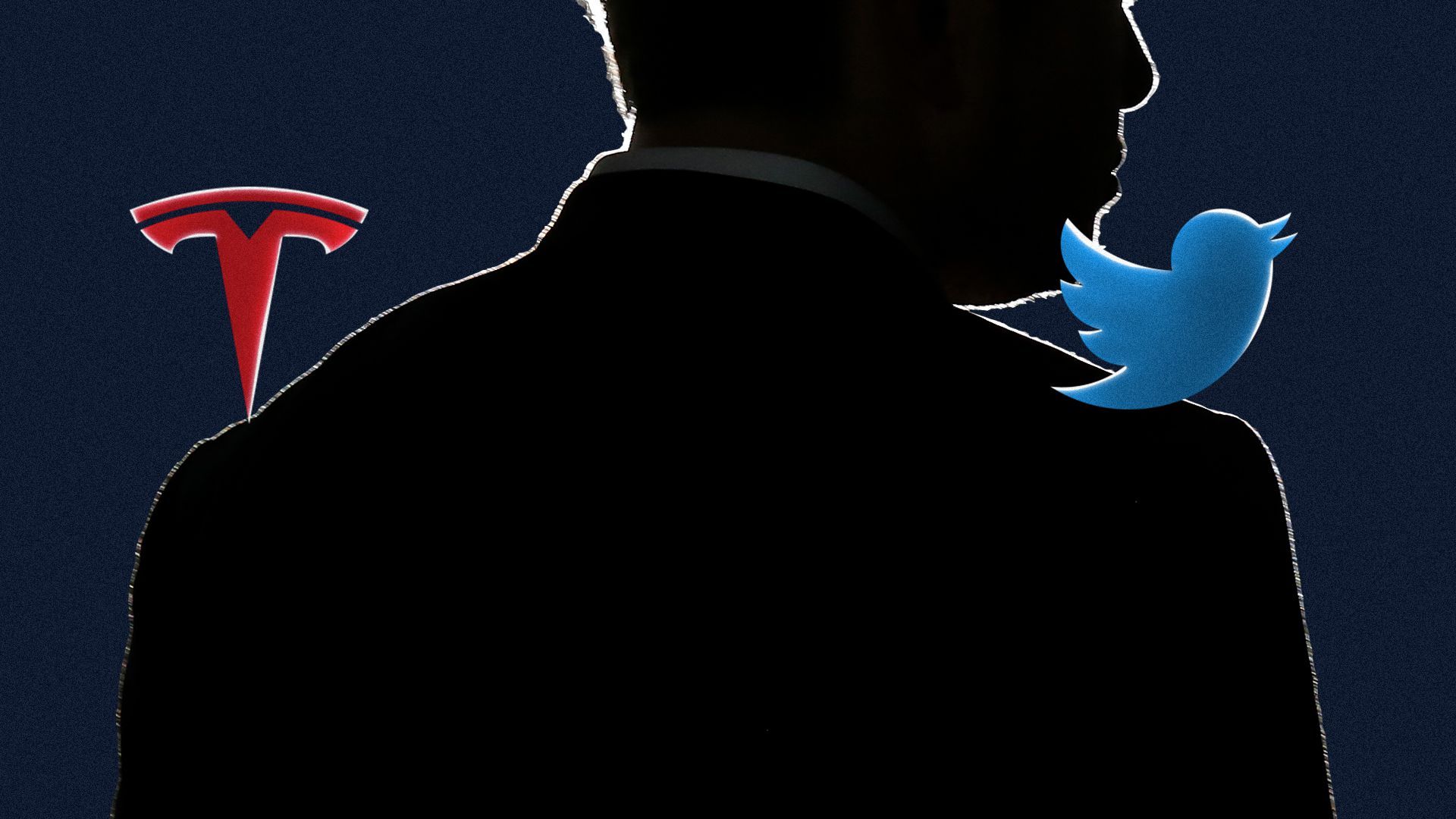| | | | | | | Presented By Upside | | | | Axios What's Next | | By Joann Muller, Jennifer A. Kingson and Alex Fitzpatrick · Dec 19, 2022 | | The days of diesel-chugging big yellow school buses could be numbered, Joann reports today, thanks to government incentives making it easier for districts to electrify their fleets. Today's newsletter is 1196 words ... 4½ minutes. | | | | | | 1 big thing: School buses go electric |  | | | Dearborn (Mich.) Public Schools took delivery of its first electric school bus last week. Photo courtesy of Blue Bird | | | | Federal and state governments are practically giving away electric school buses, Joann Muller reports. And if your local district doesn't have its hand up yet, it should — the math is a no-brainer. Why it matters: Exhaust from diesel school buses makes kids sick and curbs cognitive development. Plus, diesel buses emit greenhouse gases that contribute to climate change. - Electric school buses are a cleaner, safer alternative, and they're cheaper to operate — it costs about 14 cents per mile for electricity compared to 49 cents per mile for diesel fuel, according to Blue Bird, a leading school bus manufacturer.
- They can also act as giant batteries to store surplus energy when not in use. That means cash-strapped districts can earn money from their parked buses by selling power back to the grid during times of peak demand.
The catch: An electric school bus costs $350,000 to $450,000 — three to four times a traditional diesel bus — and most districts can't afford the upfront expense, despite the long-term savings. What's happening: A bunch of new government incentives make replacing aging diesel fleets an easy call. - The five-year, $5 billion Clean School Bus Program, approved in November 2021 as part of the infrastructure law and run by the Environmental Protection Agency, pays school districts up to $375,000 to replace a diesel bus with an electric one.
- The government offers another $20,000 for charging infrastructure, for a total of $395,000 per bus purchased.
In October, EPA awarded the program's first $1 billion to fund about 2,500 school bus replacements in nearly 400 districts. - Priority was given to low-income, rural and tribal communities like Dearborn, Michigan, near Detroit, which took delivery of its first electric school bus last week and expects to buy 18 more with a $7.1 million federal grant.
Many states offer generous rebates, too, including California, Colorado, New York, Connecticut and others. - Some local utilities also provide financial incentives to support school bus electrification.
- Congress included another $40,000 rebate for commercial vehicles, including school buses, in the Inflation Reduction Act signed in August.
The best part: All these grants and rebates can be layered, which means the savings can really add up. - "All of a sudden, schools are looking at free, or more-than-free, school buses," says Tim Reeser, CEO of Lightning eMotors, which makes electric powertrains.
The intrigue: Could school districts take advantage of all these incentives to profit on bus electrification? - It's possible, but it depends on how the rules of each program are applied. Don't expect EPA to reimburse school systems more than the cost of a bus.
- EPA says further guidance is expected soon from the Treasury Department.
- And besides, there are other costs associated with electrification, such as new charging stations or potential electrical upgrades.
The bottom line: School bus manufacturers are rapidly scaling up production to meet surging demand. - "We've absolutely seen a groundswell in applications and the number of schools who were interested in electric buses who historically were not," says Britton Smith, Blue Bird's senior vice president of electrification and chief strategy officer. "It's really changed the game."
Share this story. |     | | | | | | 2. Walmart expands drone delivery |  | | | Photo courtesy of Walmart | | | | Walmart's drone delivery service is now available in the Tampa, Orlando, Phoenix and Dallas areas, Alex Fitzpatrick reports. Why it matters: Close-range drone shipping was seen as a pie-in-the-sky concept just a few years ago. Now it's reality for the millions of Americans in range of a participating store. How it works: Shoppers near one of Walmart's planned 34 drone sites can order up to 10 lbs. of eligible goods for aerial delivery within 30 minutes. - "Once a customer places an order, the item is fulfilled from the store, packaged, loaded into the drone and delivered right to their yard using a cable that gently lowers the package," reads a Walmart release.
- The company is working with drone services startup DroneUp, which uses drone pilots certified by the Federal Aviation Administration to fly its retail sorties.
The big picture: "The race to bring drone delivery to U.S. households is shaping up as a battle of titans," as Joann reported back in May, with Amazon, UPS and others also working on the tech. What we're watching: Whether problems present themselves as drone delivery gets more popular. - Fleets of delivery drones constantly buzzing overhead could get annoying — but maybe we'd be better off with them instead of gas-guzzling trucks.
What do you think? Let us know at whatsnext@axios.com. Share this story. |     | | | | | | 3. Elon's Twitter shenanigans take toll on Tesla |  | | | Illustration: Lindsey Bailey/Axios. Photo: Joshua Lott via Getty Images | | | | Tesla investors are getting frustrated with CEO Elon Musk's Twitter fixation, Axios' Nathan Bomey reports. - The automaker's shares have lost nearly half their value in the last three months as Musk — who spent billions to acquire Twitter — sells off stock en masse.
Driving the news: Musk recently sold another $3.58 billion in Tesla stock, bringing his total selloff this year to some $40 billion — all despite promises he wouldn't keep unloading shares. What's happening: Musk is trying to prop up Twitter's sagging financial prospects as advertisers flee amid his erratic behavior. Yes, but: At about $150 per share as of Friday, Tesla still has a market capitalization of nearly half a trillion dollars — making it the most valuable automaker by a long shot. What we're watching: Whether anti-Musk sentiment affects Tesla's underlying business. Read the rest. |     | | | | | | A message from Upside | | How to fight inflation with your everyday spending | | |  | | | | The Upside app pays you back a little from each purchase to help offset rising costs. On average, users earn $148 annually. You can get cash back at: - Gas stations.
- Convenience stores.
- Grocery stores.
- Restaurants.
Take back control of your budget and download the free Upside app. | | | | | | 4. 📸 China's "smart train" |  | | | Photo: Zhang Yuan/China News Service/VCG via Getty Images | | | | A "smart train" conducts a trial run on Dec. 16 in Xianyang, China. - The train, which can carry up to 300 passengers, uses optical sensors to follow a virtual track laid out on an existing roadway.
- Proponents say such systems are easier and cheaper to deploy than traditional trains and light rail, which often require expensive and time-consuming infrastructure work.
- But others say they're just fancy, high-tech buses that can get stuck in traffic like any other road vehicle.
Photo: Zhang Yuan/China News Service/VCG via Getty Images |     | | | | | | 5. The long road to a fusion-powered future |  | | | Illustration: Natalie Peeples/Axios | | | | The path to powering the world with clean nuclear fusion energy requires solving key materials science and technology problems, Axios' Alison Snyder writes. What they're saying: "It is a long development path but it will accelerate," says Nigel Woolsey, a professor of physics at the University of York. - He estimates scientists could demonstrate a plant that produces fusion energy at scale in 10 to 20 years.
Catch up quick: Researchers at the National Ignition Facility (NIF) at Lawrence Livermore National Laboratory in California announced last week that they had, for the first time, produced a net energy gain from a nuclear fusion reaction. How it works: NIF uses 192 high-energy laser beams that strike a gold canister containing a pellet of deuterium and tritium fuel. - The laser light is converted to X-rays that compress the capsule and heat the fuel to about 150 million degrees Celsius, driving the fusion of deuterium and tritium to produce helium.
- The reaction releases energy in the form of neutrons and triggers further fusion reactions.
- The experiment, or "shot," that achieved ignition hit the fuel with 2 megajoules of energy from the lasers, and yielded 3MJ.
Yes, but: The lasers themselves require more than 300MJ of energy each time to operate — meaning NIF overall generated about 1% of the power put in. What's next: To move from physics breakthroughs to energy production will require big advances in material design. Read the rest. |     | | | | | | A message from Upside | | This app is helping users treat themselves | | |  | | | | Upside is on a mission to make sure that, even during expensive times, people still have a little extra money for a rainy day fund. The free app gets users cash back on: - Gas.
- Groceries.
- Convenience stores.
- Restaurants.
On average, users earn $148 annually. Download the free Upside app to start earning. | | | | Big thanks to What's Next copy editor Amy Stern. Was this email forwarded to you? Get your daily dose of What's Next by signing up here for our free newsletter. |  | | Are you a fan of this email format? Your essential communications — to staff, clients and other stakeholders — can have the same style. Axios HQ, a powerful platform, will help you do it. | | | | | | Axios thanks our partners for supporting our newsletters. If you're interested in advertising, learn more here.
Sponsorship has no influence on editorial content. Axios, 3100 Clarendon Blvd, Arlington VA 22201 | | | You received this email because you signed up for newsletters from Axios.
Change your preferences or unsubscribe here. | | | Was this email forwarded to you?
Sign up now to get Axios in your inbox. | | | | Follow Axios on social media:    | | | | | |










No comments:
Post a Comment